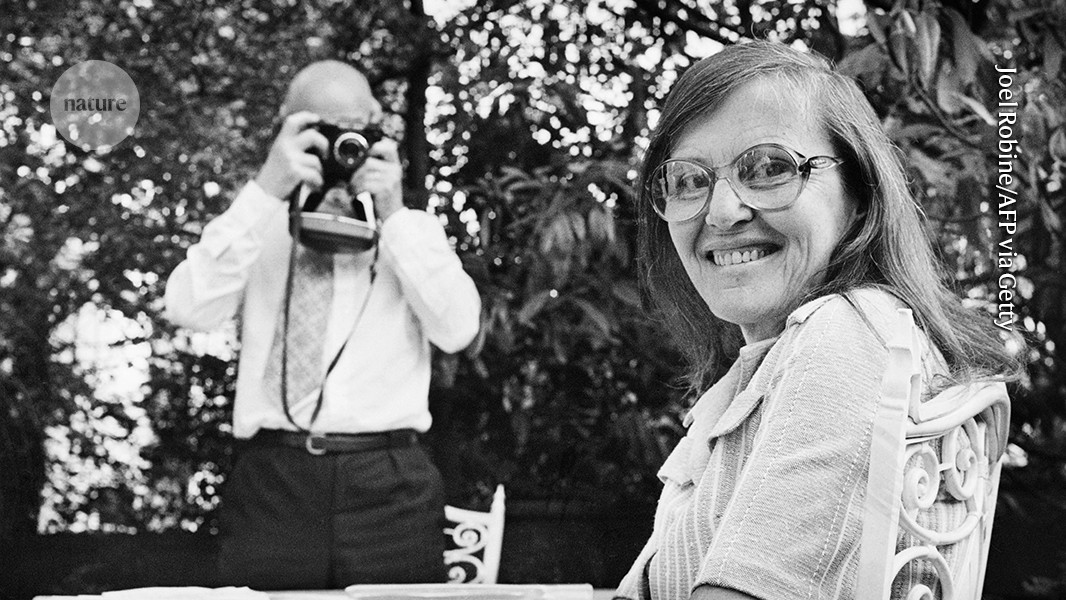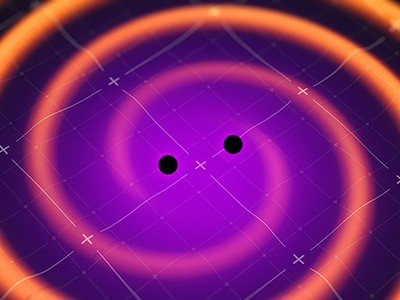
Credit: Joel Robine/AFP via Getty
Yvonne Choquet-Bruhat was a giant of the mathematical study of Albert Einstein’s general theory of relativity. Her theorem establishing the existence of solutions to Einstein’s equations is central to how mathematicians and physicists think about general relativity today, from simulating black holes to interpreting observations of gravitational waves.
Choquet-Bruhat, who was born Yvonne Bruhat in Lille, France, in 1923, passed away aged 101 in Bordeaux. She grew up in an intellectual household, her mother a teacher and her father a theoretical physicist. After the family moved to Paris when she was three years old, she excelled academically and enrolled in 1943 — during German occupation — at the École Normale Supérieure des jeunes filles in the Paris suburb of Sèvres. Her adolescence was scarred by her father’s death in 1945 at the Sachsenhausen concentration camp in Germany; he had been imprisoned for refusing to give information about students involved in the resistance to Nazism.
Five new ways to catch gravitational waves — and the secrets they’ll reveal
After hesitating over whether to study medicine, physics or mathematics, it was maths that won Yvonne over. She wanted to do research, rather than go into teaching, which was more usual for women at the time. She eschewed trends in mathematics towards abstraction, preferring to stay closer to physics and her desire to understand nature. This drew her to the mathematical study of Einstein’s general relativity.
Newly married (she married twice and used her married names as well as Bruhat), by 1947 she embarked on a PhD supervised by mathematical physicist André Lichnerowicz. She was mentored by Jean Leray, a towering figure in the theory of partial differential equations, who had also spent time in German captivity. Leray suggested that Yvonne attempt the ambitious problem of proving the ‘well-posedness’ of the notoriously difficult equations of Einstein’s theory. That result became the centrepiece of her thesis.
General relativity is governed by a set of complicated equations that were written down by Einstein in 1915 to replace Isaac Newton’s theory of gravity. The equations describe the dynamics of a 4D warped space-time geometry, curving in response to the motion of matter. In Newtonian theory, one can, in principle, completely predict the trajectories of moons, planets or stars, given their initial conditions, using Newton’s laws alone. When Einstein formulated his theory, it wasn’t at all clear that the analogous property would still hold.
Do black holes explode? The 50-year-old puzzle that challenges quantum physics
Yvonne’s 1952 landmark paper (Y. Fourès-Bruhat Acta Math. 88, 141–225; 1952) showed precisely this. Corresponding to any initial state of the Universe, a resulting space-time geometry arises and is determined by Einstein’s equations alone. This mathematical predictability of the Universe is the well-posedness of Einstein’s theory.
Her theorem also resolved another long-standing puzzle. In 1917, Einstein had recognized that his theory contained solutions in the form of waves in space-time — gravitational waves. But he wasn’t confident that these waves had any intrinsic physical meaning rather than being mere changes in co-ordinates that could propagate at arbitrary speeds. Yvonne’s theorem gives intrinsic meaning to finite propagation of gravitational waves and shows that the waves propagate at the speed of light, just like electromagnetic waves.




